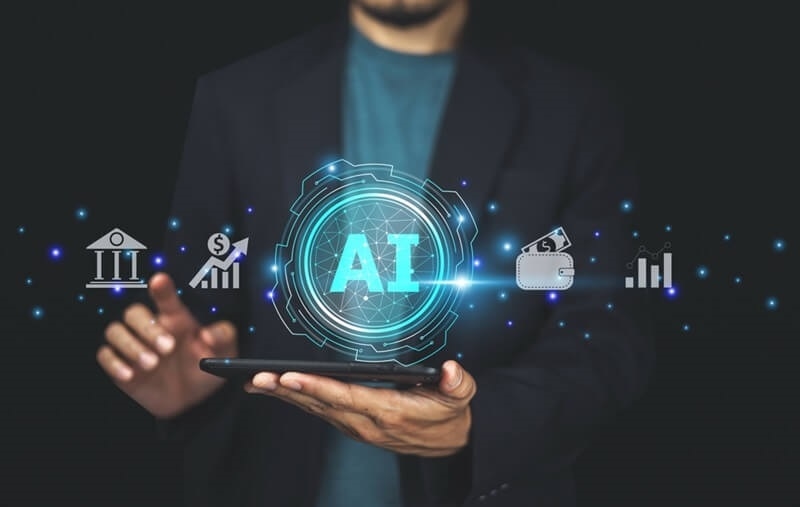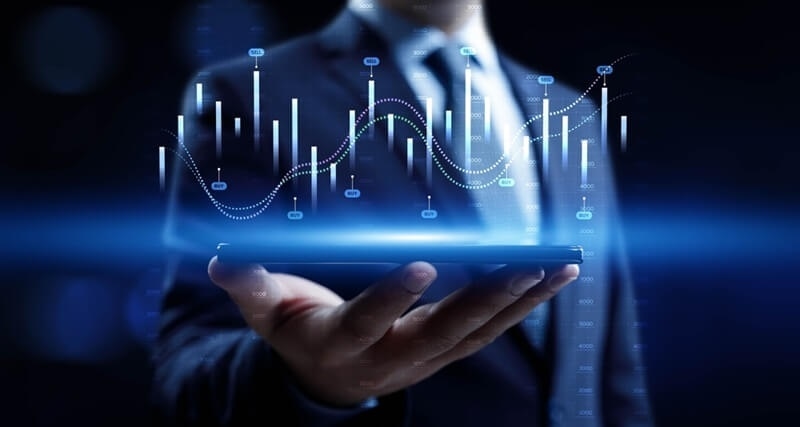
The commodity trading world is evolving rapidly. Artificial intelligence and algorithms are changing what previously depended greatly on human intuition, experience, and guesswork. The use of AI by traders, investors, and analysts to make smarter decisions, predictions, and analyses is on the rise. Have you ever thought about how technology is transforming the commodity futures market? This blog will provide you with a clear picture of the transformation process.
Artificial intelligence ceases to be a buzzword. It has become a convenient device that is transforming the commodity trading environment. In the case of AI in commodity trading, companies have the capacity to process large volumes of information, discern patterns and make predictions which would have been virtually impossible to do manually on an individual basis.
Artificial intelligence can analyze market data on a real-time basis. This covers all historical price patterns to weather patterns, political changes in the world and even social media sentiments. Through these aspects, AI can help traders to have a better understanding of the market. This minimises guesswork and boosts decision-making confidence.
Predicting market movements can be considered one of the most significant benefits of AI. With machine learning models, AI can identify trends and determine the probable trend of commodity prices. As an example, when the situation with oil prices is dependent on world-related events, AI will be able to examine the data and provide likely predictions within a short period of time.
Trading risks are also hugely minimised by AI. Through the analysis of historical losses and gains, AI can make recommendations on safer trading. Today, traders are able to evade making decisions out of mere emotions, which tend to be expensive errors. Risk management is less stressful and more systematic with the help of AI.

Automatic computer-program-based trading, also known as algorithmic trading, algorithmic trading involves the use of computer software to trade securities automatically governed by a predetermined set of rules. This has transformed the way the futures market usually works, making it quicker, more effective and more precise.
Algorithms are created to comply with certain directions, e.g. when to acquire or sell a commodity. These are instructions that are informed by market data, price movements and other conditions. The algorithm can run the trades automatically after it has been programmed, thus there is no chance of missing an opportunity because of a slow reaction or an emotion.
The prime advantage of algorithmic trading is speed. Prices in commodity futures may fluctuate within seconds, and a trade may be missed, resulting in the loss of profits. Algorithmic trading makes trades immediately as it provides the traders with competitive advantages. It also enables complicated strategies such as arbitrage or statistical trading, which would be hard to administer manually.
Human beings are subject to errors, particularly when they are stressed or in case they are handling large amounts of information. Algorithms remove these errors by using strict instructions.
More to discover: How Central Bank Policies Shape Bond Markets: A Deep Dive
Monitoring the futures market trends is critical to people in the commodity trading business. The AI and algorithmic tools have made it more convenient and precise to know such trends.
Artificial intelligence (AI) software can be used to keep an eye on the price of various products, monitor the fluctuations of supply and demand, and even predict seasonal shifts. This assists the traders in seeing the complete picture and making wise choices.
Futures is a market where plenty of knowledge is involved, such as trading volume, past prices and economic indicators around the world. All this data can be processed quite fast with the help of AI, and they are presented in a clear format, enabling traders to see all the trends and patterns that are not readily apparent.
Monitoring the market trends may be a stressful experience. There might be sudden price movements that may instil fear or greed, hence ending up making poor choices. It is possible to eliminate this emotional load with the help of AI and algorithmic trading that offer objectively processed data and automated behaviours.
Commodity analytics is about examining market data to understand trends, forecast prices, and make better investment choices. Modern analytics tools, powered by AI, are transforming how traders approach the commodity market.
AI can process enormous amounts of data in real time. This includes information about global trade, weather, production rates, and political developments.
AI models learn from historical data and continuously improve their predictions. This enhances the accuracy of forecasts, helping traders make better decisions on when to buy or sell futures contracts.
Although AI and algorithmic trading may be used independently, they are most potent in combination. AI offers predictive and insightful data, and algorithms make trades automatically on the basis of such data.
The blend permits traders to make decisions within seconds without doubt. The opportunity is identified by AI, and the algorithms take direct action so that traders would be able to take advantage of good conditions.
Traders are now able to trade across more markets than ever before as AI analyses data on a variety of commodities, and algorithms can make trades concurrently. This opens up new possibilities and gives the possibility of trading diversely.
Trading may be an emotionally demanding process, but the AI and the algorithms ease the pressure. The traders no longer have to manually respond to each minor fluctuation of prices. Instead, they are able to rely on the system to take care of data and make trades in a smart way.
Also check: ETFs in Commodity Investing: A Smart Strategy Explained
The influence of AI and algorithmic trading on commodity futures is still in its infancy. Innovation, accuracy, and efficiency are expected to be even more in the future.
Artificial intelligence in commodity trading is changing the structure of future markets. With the integration of predictive analytics, algorithmic execution and real-time commodity insights, the trader can make more informed selections, can manage risk, and will be able to navigate the market with ease. The trends on the futures markets are simpler to follow, and the commodity analytics have been more robust than ever. With technology continuing to develop, the future of commodity trading appears smarter, faster and more emotionally balanced to traders.
This content was created by AI